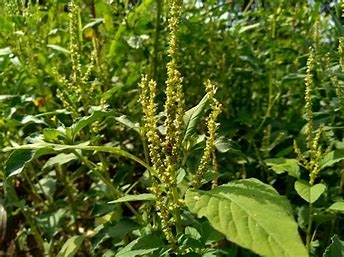
New Weed Control Method
- Posted by: Gale Perez
Sterile Pollen Technique Shows Promise for Palmer Amaranth Weed Control
Newly published research provides a novel and sustainable weed-management strategy
WESTMINSTER, Colorado – 22 May2024 – Recently published research in the journal Weed Science shows that a sterilization technique commonly used to control insect pests can be modified to control weeds that require pollination to reproduce. More specifically, the researchers determined that employing a sterile pollen technique (SPT) could effectively disrupt Palmer amaranth (Amaranthus palmeri S.) reproduction.
Palmer amaranth remains among the most detrimental weeds in North American agriculture, and its resistance to several herbicide groups makes its control a serious challenge. Yet, researchers in this study were able to find a promising new control method for Palmer amaranth and possibly for many other difficult-to-control weeds.
“Our results indicate that SPT, using irradiated pollen, can be a valuable approach for reducing weed-seed production,” says Mohsen B. Mesgaran, Ph.D., a plant sciences assistant professor at the University of California Davis, and the article's corresponding author. “SPT also holds potential for broad-spectrum weed control by mixing sterile pollen from multiple weed species in a single application.”
Additionally, the researchers found that SPT shows promise for managing troublesome herbicide-resistant weeds that have survived in-season control efforts.“We observed the greatest reduction in seed set when irradiated pollen was introduced to the stigma through artificial pollination prior to open pollination,” notes Mesgaran. “It appears that irradiated pollen exerts a preventive effect on naturally occurring pollen that arrives later.”
While the researchers determined that a dose of 300 units of ionizing radiation (Gy) strikes the optimal balance to achieve both efficient Palmer amaranth pollination and seed sterility, challenges still remain. For example, irradiated pollen is currently less competitive than naturally occurring pollen. Thus, field managers may need to employ additional measures to successfully control Palmer amaranth with SPT, such as dispersing irradiated pollen in the field before male anthesis and releasing it multiple times.
More information about SPT and Palmer amaranth control can be found in the article (by Wenzhuo Wu and Mohsen B. Mesgaran), “Exploring sterile pollen technique as a novel tool for management of Palmer amaranth (Amaranthus palmeri).” The research is featured in Volume 72, Issue 3 of Weed Science, a Weed Science Society of America journal, published online by Cambridge University Press.
Original source: Weed Science Society of America (https://wssa.net/2024/05/sterile-pollen-technique-shows-promise-for-palmer-amaranth-weed-control/)

palmer amaranth

